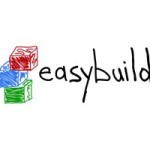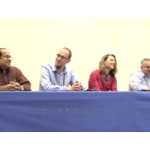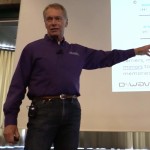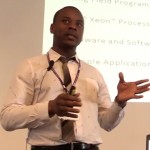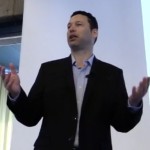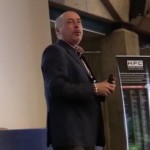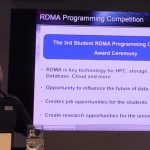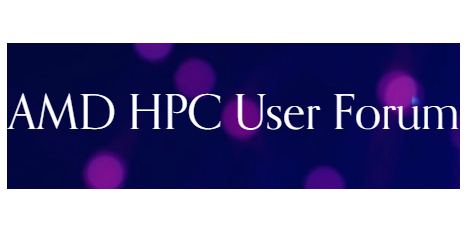Kenneth Hoste from the University Ghent presented this tutorial at the Switzerland HPC Conference. “One unnecessarily time-consuming task for HPC user support teams is installing software for users. Due to the advanced nature of a supercomputing system (think: multiple multi-core modern microprocessors (possibly next to co-processors like GPUs), the availability of a high performance network interconnect, bleeding edge compilers & libraries, etc.), compiling the software from source on the actual operating system and system architecture that it is going to be used on is typically highly preferred over using readily available binary packages that were built in a generic way.
Panel Discussion on Exascale Computing
In this video from the 2016 HPC Advisory Council Switzerland Conference, Addison Snell from Intersect360 Research moderates a panel discussion on Exascale computing. “Exascale computing will uniquely provide knowledge leading to transformative advances for our economy, security and society in general. A failure to proceed with appropriate speed risks losing competitiveness in information technology, in our industrial base writ large, and in leading-edge science.”
Bo Ewald Presents: The Quantum Effect – HPC Without FLOPS
Bo Ewald from D-Wave Systems presented this talk at the HPC Advisory Council Switzerland Conference. “This talk will provide an introduction to quantum computing and briefly review different approached to implementing a quantum computer. D-Wave’s approach to implementing a quantum annealing architecture and the software and programming environment will be discussed. Finally, some potential applications of quantum computing will also be addressed.”
Using Xeon + FPGA for Accelerating HPC Workloads
“The Exascale computing challenge is the current Holy Grail for high performance computing. It envisages building HPC systems capable of 10^18 floating point operations under a power input in the range of 20-40 MW. To achieve this feat, several barriers need to be overcome. These barriers or “walls” are not completely independent of each other, but present a lens through which HPC system design can be viewed as a whole, and its composing sub-systems optimized to overcome the persistent bottlenecks.”
Video: Protecting Your Data, Protecting Your Hardware
“Thanks to the arrival of SSDs, the performance of storage systems can be boosted by orders of magnitude. While a considerable amount of software engineering has been invested in the past to circumvent the limitations of rotating media, there is a misbelief than a lightweight software approach may be sufficient for taking advantage of solid state media. Taking the data protection as an example, this talk will present some of the limitations of current storage software stacks. We will then discuss how this unfold to a more radical re-design of the software architecture and ultimately is making a case for an I/O interception layer.”
Video: The State of Linux Containers
“With Docker v1.9 a new networking system was introduced, which allows multi-host network- ing to work out-of-the-box in any Docker environment. This talk provides an introduction on what Docker networking provides, followed by a demo that spins up a full SLURM cluster across multiple machines. The demo is based on QNIBTerminal, a Consul backed set of Docker Images to spin up a broad set of software stacks.”
Co-Design Architecture: Emergence of New Co-Processors
“High performance computing has begun scaling beyond Petaflop performance towards the Exaflop mark. One of the major concerns throughout the development toward such performance capability is scalability – at the component level, system level, middleware and the application level. A Co-Design approach between the development of the software libraries and the underlying hardware can help to overcome those scalability issues and to enable a more efficient design approach towards the Exascale goal.”
Video: The Nvidia Tesla Accelerated Computing Platform
Axel Koehler from Nvidia presented this talk at the HPC Advisory Council Switzerland Conference. “Accelerated computing is transforming the data center that delivers unprecedented throughput, enabling new discoveries and services for end users. This talk will give an overview about the NVIDIA Tesla accelerated computing platform including the latest developments in hardware and software. In addition it will be shown how deep learning on GPUs is changing how we use computers to understand data.”
Video: Welcome to HPC in Switzerland
Michele de Lorenzi from the Swiss National Supercomputing Centre presented this talk at the 2016 HPC Advisory Council Switzerland Conference. “Founded in 1991, CSCS, the Swiss National Supercomputing Centre, develops and provides the key supercomputing capabilities required to solve important problems to science and/or society. The centre enables world-class research with a scientific user lab that is available to domestic and international researchers through a transparent, peer-reviewed allocation process. CSCS’s resources are open to academia, and are available as well to users from industry and the business sector. The centre is operated by ETH Zurich and is located in Lugano.”
Video: Introduction to the HPC Advisory Council
In this video from SC15, Brian Sparks from Mellanox presents an overview of the HPC Advisory Council. “The HPC Advisory Council’s mission is to bridge the gap between high-performance computing (HPC) use and its potential, bring the beneficial capabilities of HPC to new users for better research, education, innovation and product manufacturing, bring users the expertise needed to operate HPC systems, provide application designers with the tools needed to enable parallel computing, and to strengthen the qualification and integration of HPC system products.”

